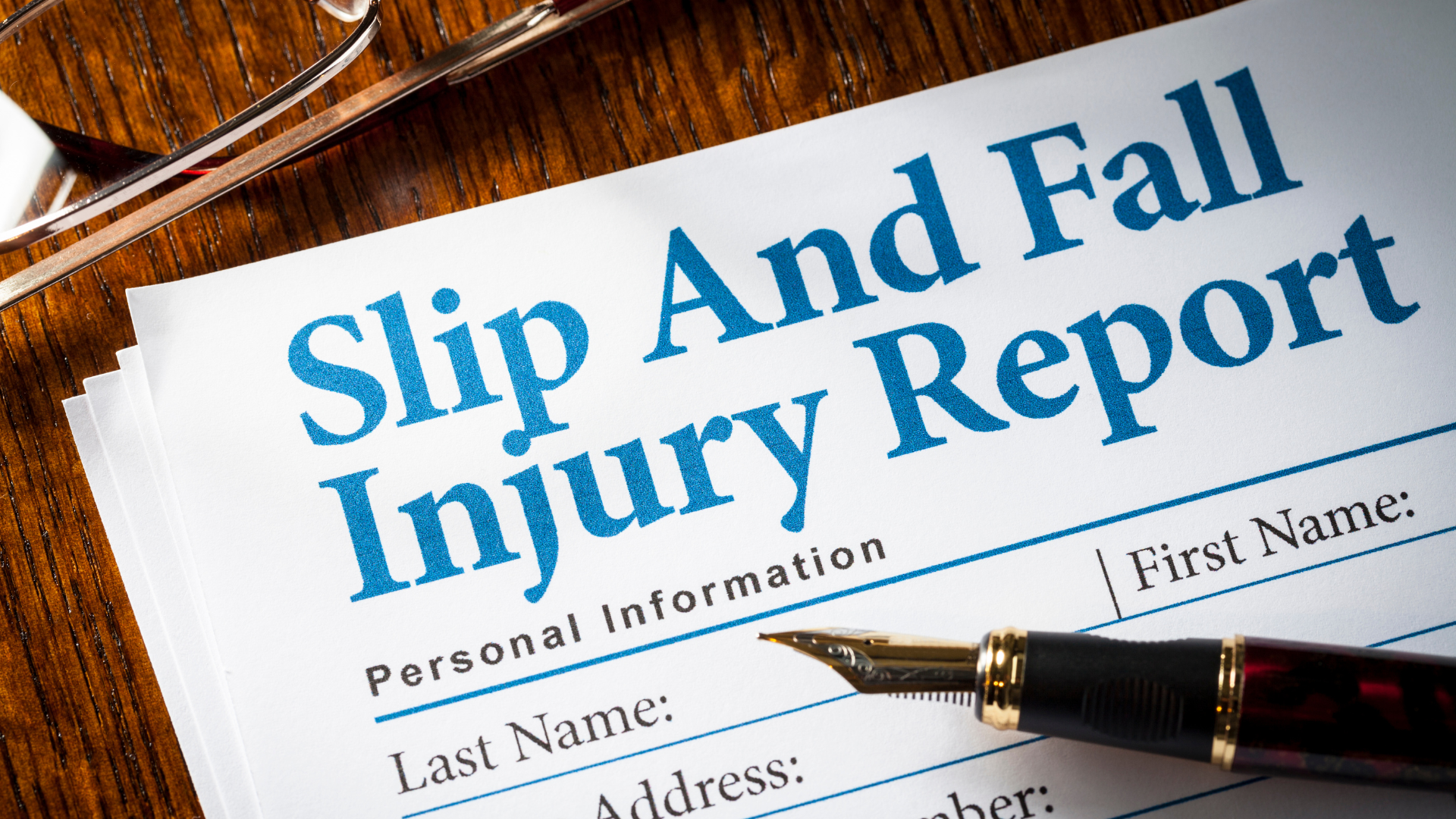
According to the Centers for Disease Control and Prevention (CDC), 3 million older adults are treated for slips and falls annually in emergency departments nationwide. Over 800,000 of these emergency department patients need long-term medical care. Broken bones and head trauma are common injuries that require immediate medical attention. Slips and falls cause 95% of hip fractures. Further, slips and falls are the leading cause of traumatic brain injury. Over $50 billion is spent on medical costs resulting from slips and falls each year.
Since one of every five falls leads to a serious injury, it is essential to know what to do after a slip-and-fall accident. Poorly maintained sidewalks and other infrastructure are often what lead to the most debilitating falls. When this happens, the owner of the premises may be liable for the damage caused by the fall. The following list presents some steps to take after a slip-and-fall accident to help ensure your rights are protected.
Stay Calm and Assess Yourself for Injuries
Many of us have the instinct to try to “bounce right back up” after we fall. Do not give in to this instinct. Sudden movements can be dangerous and exacerbate back and spine injuries. Taking a breath and taking stock of how your body feels before making any sudden movements is essential.
If you don’t notice any pain, numbness, or tingling, you should be ok to get back up slowly. Sharp pain, numbness, or tingling can indicate a severe back or spine injury. If you do feel any of these sensations, you should stay where you are until medical professionals arrive. Do not let anyone move you unless you are in danger.
Call an Ambulance If Needed
If you suspect you might be injured, call an ambulance. Ask someone else to call an ambulance if you cannot do so. The medical professionals who arrive will know the best way to ensure you do not further injure yourself. They will also check for injuries you may not have noticed at first.
An immediate medical assessment by paramedics will also add credibility to your case. Proving an injury in court is a major hurdle in obtaining compensation. Medical professionals are in the best position to assess you for injuries.
Get Contact Information
Gather the contact information of anyone who witnessed your fall. If you cannot do this yourself, ask someone on the scene to do so for you. Witness testimony is an important aspect of proving what circumstances caused your fall. Many property owners will try to argue that the fall didn’t happen in the way you remember. Neutral third-party witnesses are one of the best ways to prove what happened. If you gather contact information, an attorney can contact witnesses for you later.
Determine the Cause and Gather Evidence
Knowing the cause of your fall will help you recover damages. Look over the scene to see what caused your fall if you can. Potential causes include wet floors, loose carpets, and decaying walkways.
Whether or not you determine the cause, take pictures to use as evidence later. It is vital to document the scene as it is. Upon hearing of the slip and fall, property owners may remove the defect that caused your fall. Take as many pictures of the area as you can. Also, take photos of your injuries. If you see any cameras, try contacting the owners and asking them for the recording. It would help if you also asked business owners, including the potentially liable one, to preserve any footage of the event. The more photographic and video evidence, the better off you will be.
See a Doctor
If you do not need an ambulance, it is vital to see a doctor as soon as possible. A doctor will help you develop a recovery plan and assess you for injuries you may not have caught. A doctor will also assess risk to determine if you need emergency care.
Seeing a doctor immediately also adds credibility to your case. It is harder to claim you were injured if a doctor does not perform an exam. The longer you wait, the less severe your injuries may seem to the court.
Create a Case File
Remembering what happened leading to a slip-and-fall accident can be challenging. It is also essential to have easy access to any documentation related to the accident. Creating a case file is an excellent way to stay organized. You should keep all documentation related to the fall in the case file. Standard documents are accident reports, medical records, medical bills, and insurance claims. It is also essential to write down what happened and note the exact location where you fell.
File an Insurance Claim
You should file an insurance claim as soon as you have seen a doctor. In most cases, the property owner will be responsible for paying damages. Try to contact their insurance company to report the accident. If you can not reach them, an attorney can help you.
Don’t Provide Any Statements
If an insurance adjuster asks for a statement, do not give them one without the help of an attorney. Limiting your contact with the property owner is vital until you have secured representation. Avoid speaking about the incident on social media as well. Even if you are entirely in the right, insurance companies and property owners can try to twist your words to make it seem like you are to blame. An attorney will help with these statements and ensure you complete any other necessary procedures after a slip-and-fall accident.
Contact Brett McCandlis Brown & Connor PLLC
If you have been injured by a slip-and-fall accident, Brett McCandlis Brown & Connor PLLC can help. Our experienced personal injury attorneys can help you identify all the steps to take after a slip-and-fall accident. Our firm has a 97% success rate and has recovered over $100 million for our clients. We pride ourselves on getting to know your case so we can fully explain all the legal options available to you. Contact Brett McCandlis Brown & Connor PLLC now, and you won’t have to settle for less.


